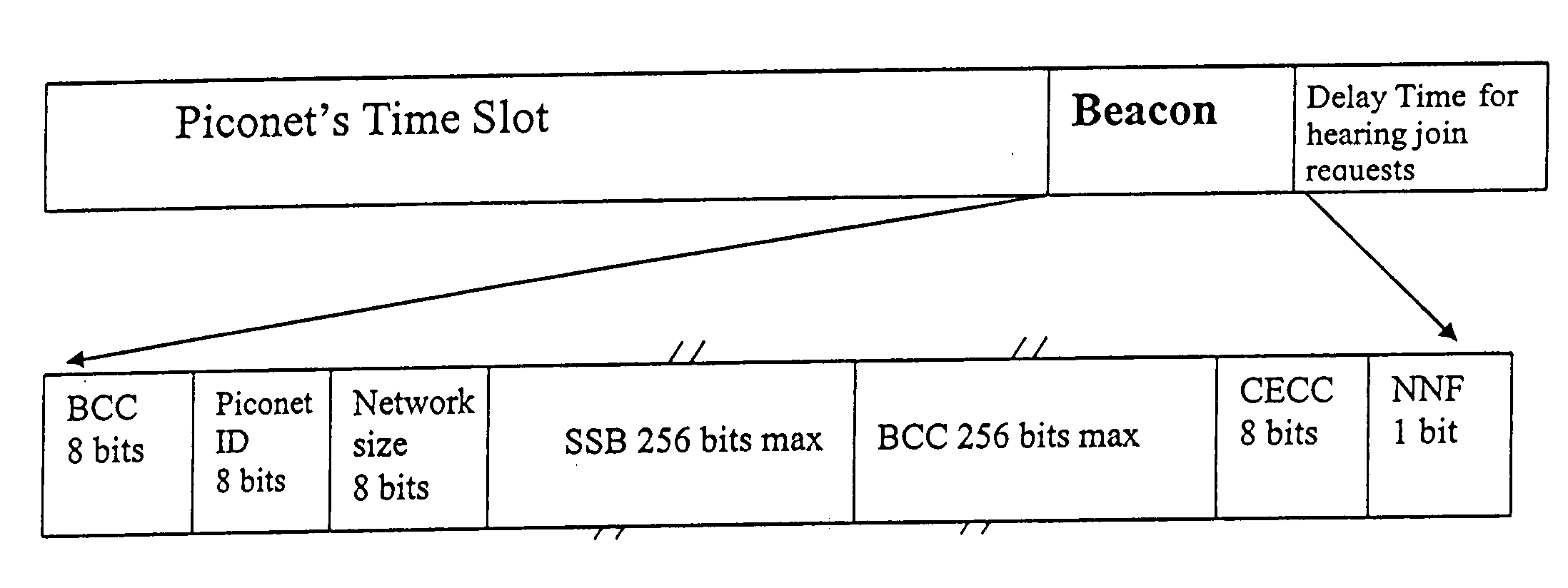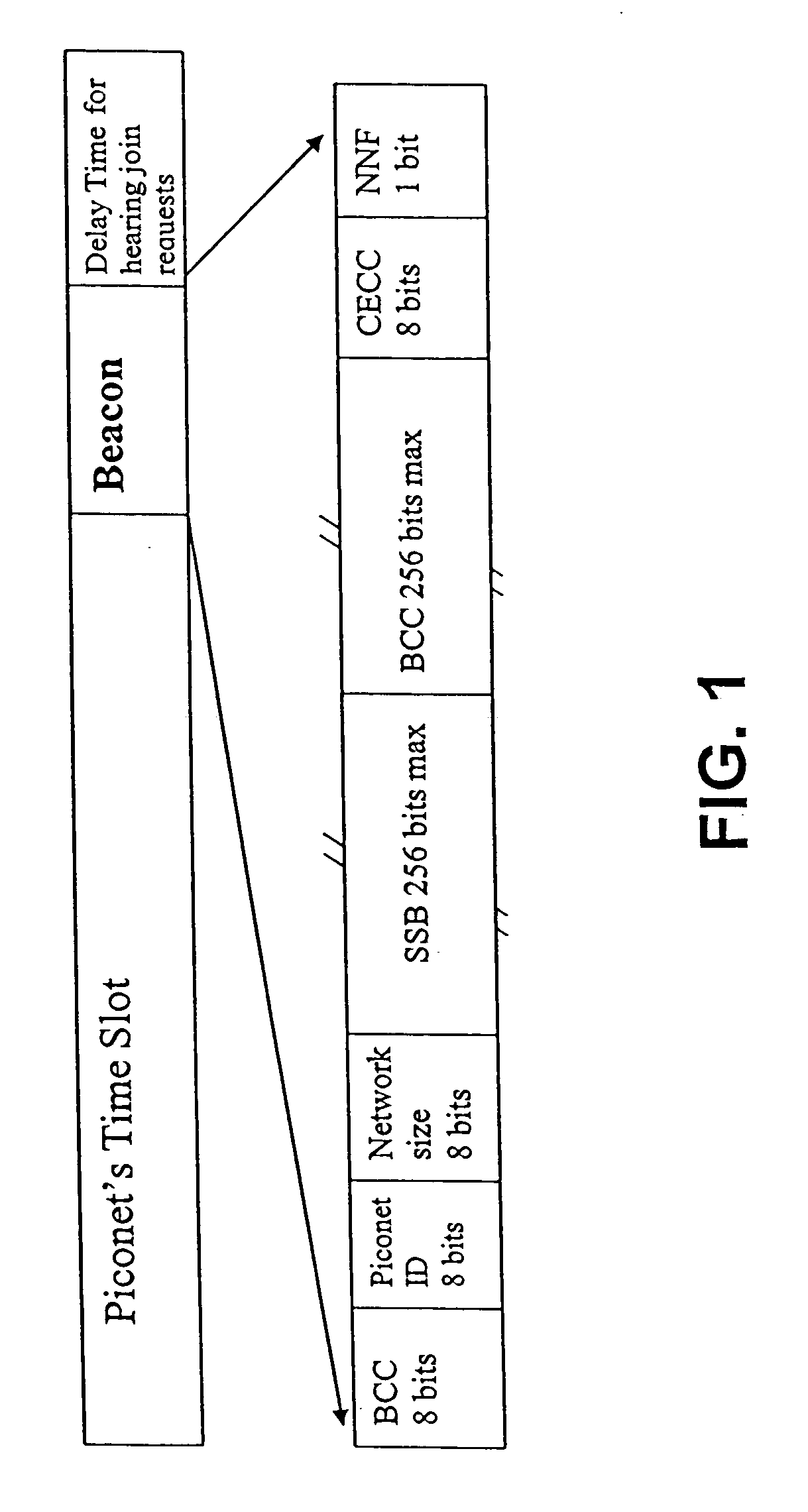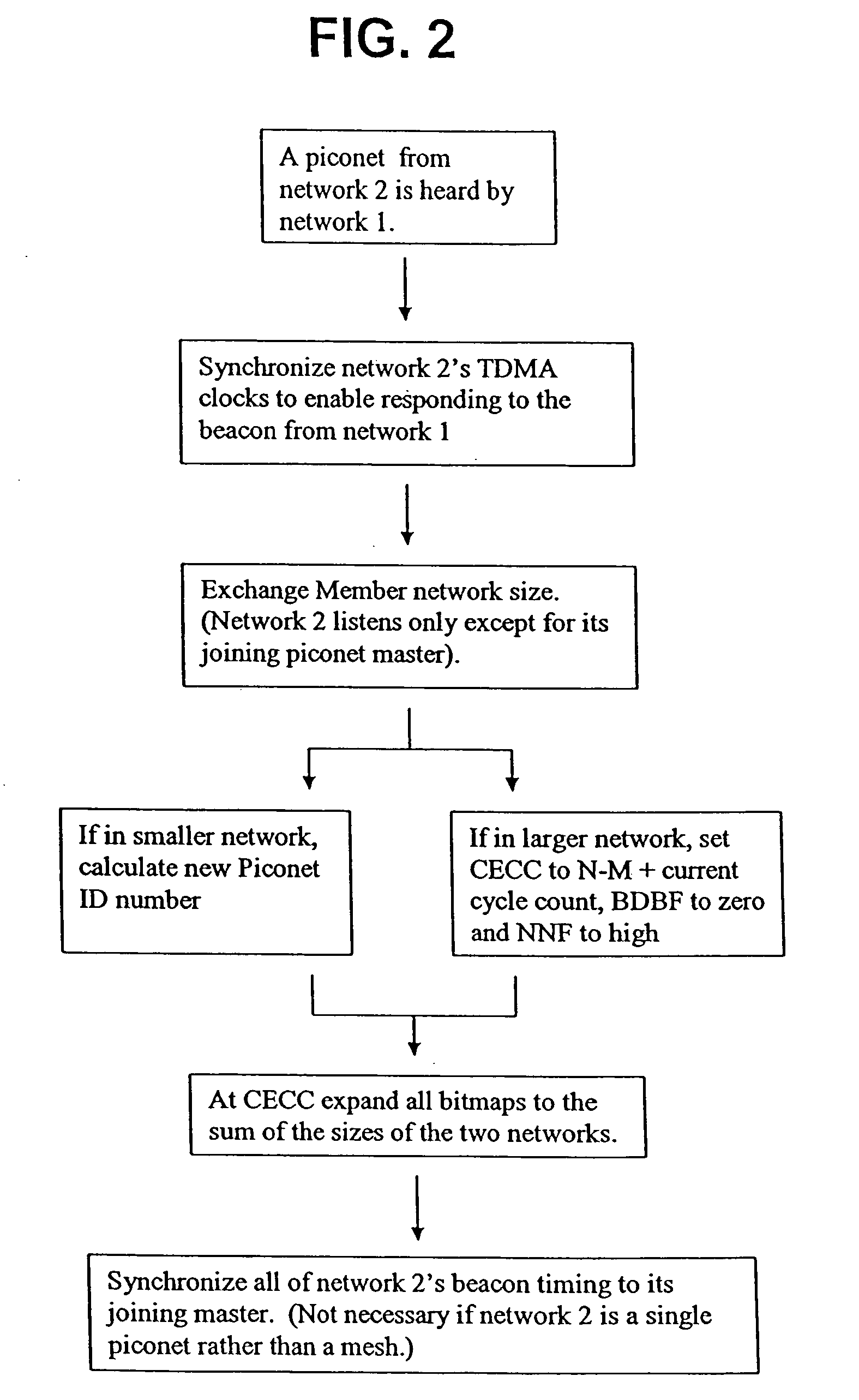Method of creating, controlling, and maintaining a wireless communication mesh of piconets
a wireless communication and mesh technology, applied in multiplex communication, data switching networks, wireless commuication services, etc., can solve problems such as not being a suitable candidate for master stations
- Summary
- Abstract
- Description
- Claims
- Application Information
AI Technical Summary
Benefits of technology
Problems solved by technology
Method used
Image
Examples
case 1
Mesh Reaches Beacon Turn-Off Time DBCN1 before the Join Mesh BCN Reaches Value CECa1
See FIGS. 7a through 7f, and 9a through 9c. FIG. 7b shows merge mesh 200 with beacons turning off (dotted outline). The unjoined piconet master (UPM) 30 transmits a beacon (Msg. No. 14, FIG. 9b), and the join facilitator 110 sends the “Join Complete-Merge Start” command (Msg. No. 15, FIG. 9b) to the unjoined piconet master (UPM) 30, with: Beacon elements NMF=1 and NMM=NTM3 indicating the merge in progress; Beacon element MID=MID1 to identify the join mesh 100; Beacon elements PIN=PIN1 and NTM=NTM1, providing the PIN and NTM for the join mesh 100.
This completes the second phase of the process, and the third phase, the res-synchronization of the piconet masters, begins.
When all merge mesh 200 beacons have stopped, the UPM 30 transmits a “Resync Start” command (Msg. No. 17, FIG. 9c) to both meshes with: Beacon elements NMF=1 and NMM=NTM3 indicating the merge in progress; Beacon element MID=MID...
case 2
esh BCN Reaches Value CECa1 before Merge Mesh Reaches Beacon Turn-Off Time DBCN1
See FIGS. 8a through 8f, and 9d through 9f. In the second case the join mesh 100 BCN reaches the value CECa1 and the join facilitator 110 sends the “Join Complete-Merge Start” command (Msg. No. 15, FIG. 9e) to the unjoined piconet master (UPM) 30 before the merge mesh 200 reaches beacon turn-off time DBCN1. The “Join Complete-Merge Start” command includes: Beacon elements NMF=1 and NMM=NTM3 indicating the merge in progress; Beacon element MID=MID1 to identify the join mesh 100; Beacon elements PIN=PIN1 and NTM=NTM1, providing the PIN and NTM for the join mesh 100.
In this case the merge mesh 200 beacons are still sending. At some point during the merge mesh 200 beacon shutdown process, the UPM 30 sends a first beacon (Msg. No. 17, FIG. 9e) to the join facilitator 110 with: Beacon elements NMF=0 and NMM=0; Beacon element MID=MID1 to identify the join mesh 100; Beacon elements PIN=PIN3 and NTM=NTM3...
PUM
 Login to View More
Login to View More Abstract
Description
Claims
Application Information
 Login to View More
Login to View More - R&D
- Intellectual Property
- Life Sciences
- Materials
- Tech Scout
- Unparalleled Data Quality
- Higher Quality Content
- 60% Fewer Hallucinations
Browse by: Latest US Patents, China's latest patents, Technical Efficacy Thesaurus, Application Domain, Technology Topic, Popular Technical Reports.
© 2025 PatSnap. All rights reserved.Legal|Privacy policy|Modern Slavery Act Transparency Statement|Sitemap|About US| Contact US: help@patsnap.com



